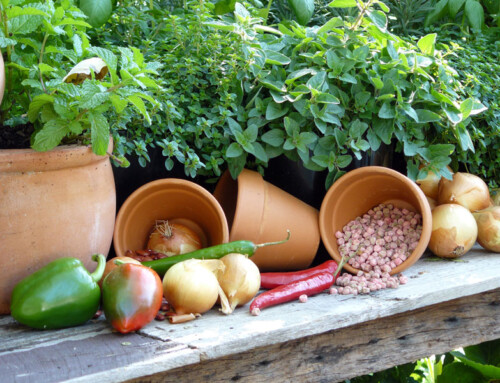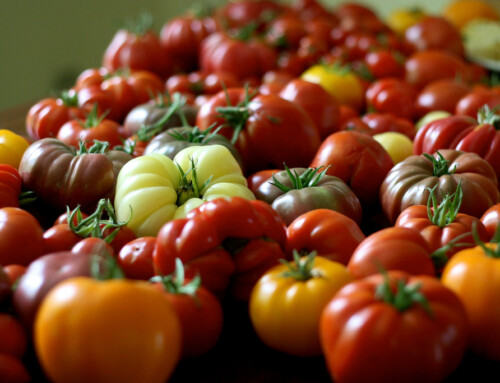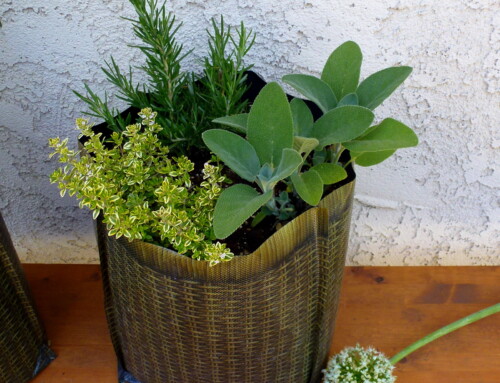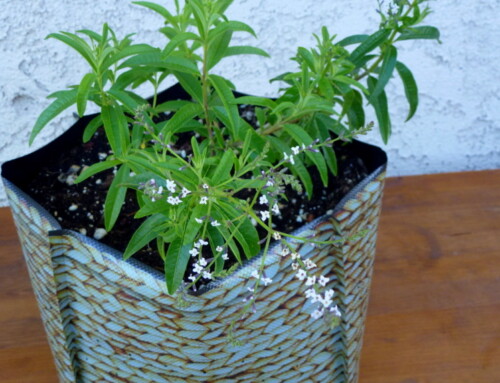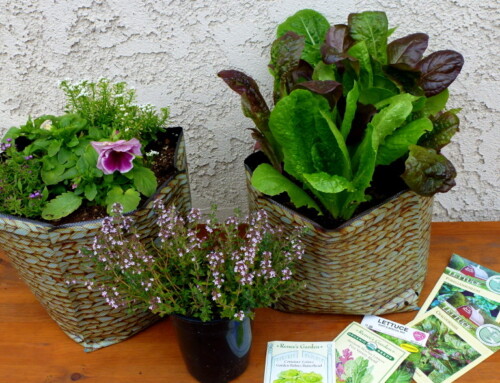By Jenny Peterson.
Most of us don’t garden as much over the winter months, particularly those of us who live in colder climates. The snow covers everything, and even our milder climates can get pretty chilly. But diehard gardeners needn’t hang up their gloves and trowels until April — there’s plenty of indoor gardening to be had, beginning with herbs. Here’s what you need to know to get started with an indoor herb garden.
Can I bring my outside herbs inside for the winter?
Yes, if you do it slowly. No plant will be happy about being yanked unceremoniously from one location to another, especially outdoors to indoors. The two environments are very different, so make sure you acclimate your outside herbs by slowly exposing them to slightly lower light exposure before finally bringing them inside.
Will all herbs grow inside?
It’s important to remember that no plant was created to grow indoors rather than outside in the ground. That being said, some plants — herbs included — grow better than others indoors. The top five that often fare the best in indoor herb gardens are oregano, chives, mint, rosemary and thyme, while other herbs like basil tend to be a bit fussier. It’s worth trying a wide variety, however, to determine which specific herbs prefer your home’s blend of light and humidity.
Can I plant them all together, or do I need separate pots for each herb?
That depends upon what herbs you want to grow in your indoor herb garden. Just like their outdoor container counterparts, indoor herbs have different growing requirements. The Mediterranean herbs like lavender and rosemary appreciate drier soils, and won’t perform well if paired in the same pot as thirsty mint or basil. Collect herbs with the same light and water requirements to plant in one larger pot, or use separate pots for each.
Speaking of light and water…
Most herbs are conditioned for bright, direct sun. Since nobody I know has direct sunlight inside their house, the next best thing is to position your indoor herb pots by the brightest windows you have. These windows will typically have a southern or western exposure to provide bright light and warmth. Make sure your pots have drainage holes on the bottom so your herbs don’t get waterlogged (particularly those arid Mediterranean herbs), and water when the top of the soil is dry. This is more of an art than a science, but it will usually mean watering once a week or so, less frequently for the arid herbs. And remember — smaller pots tend to dry out more quickly, so be sure to tend to those more frequently in your indoor herb garden.
Get creative!
If you really want to try the full range of herbs inside, look into purchasing a grow light to mimic the sun’s rays. Garden windows are another option — these windows that bump out from the window opening catch every beam of available sunlight while providing handy shelves for your plants. And don’t forget to make it all attractive — just because we want herbs inside doesn’t mean that we have to settle for ugly contraptions. Look into vertical indoor garden displays, beautiful containers and interesting topdressings like pebbles or gravel to provide a perfect finishing touch.



